(updated October, 2008 and June, 2010) This article was published in the July, 2007 CORSA Communique.
Introduction
You may recall from previous Communique articles that my 1966 500 coupe is a test bed for various kind of upgrades, most of which are stock-appearing. The latest in a long line of such projects was this past winter's transplant of a 1967 steering column into the car. Describing the details of that project are the subject of a future article—the good news is the column is installed and works fine.
This article concentrates on one somewhat-misunderstood component of the 1967-9 steering column: namely, the turn signal switch mechanism.
Background
The 1967-9 steering column is substantially different from 1966. Pretty much everything changed in a significant way except the pot joint at the lower end of the column that connects it to the steering box. The main reason for the redesign was to make the column fully-collapsible for increased safety. Similar changes were made across all of the GM product line that same year. This fact has some positive implications, to be discussed more in a moment.
Included in the redesign were all-new parts on the top end of the column. The turn signal switch was completely different, with the most notable change being the addition of a four-way hazard flasher. No longer did one need to purchase this as a dealer accessory. The new switch also introduced momentary contacts for lane changes; a convenience that we take for granted on cars today. Also, the upper steering shaft bearing was now housed in a separate bearing support rather than being an integral part of the switch. No doubt this change was made, at least in part, to allow the switch to be replaced without having to toss out the bearing too. It's also likely that a sturdier bearing support was needed to ensure proper collapsing behavior in an impact.
The Corvair and Corvette are unique in that they use a different brand of turn signal switch for 1967-8 from all other GM products, with the exception of Pontiacs, which used a mixture of both. The Corvair continued to use this switch in 1969, because it alone did not receive the further steering column changes which integrated a locking ignition switch. This turn signal switch is identified in parts books as "Boyne" vs. the other, more common switch, which is known as "Delco". The two switches have the same functionality but have quite different construction. The Boyne switch is P/N 5698520 and the Delco switch is P/N 7800482. Note: There are also versions of both switches with bulb sockets, to illuminate the shift indicators on column-shift automatic transmission cars. These are P/N 7800006 (Boyne) and 5698897 (Delco). All are in group 2.895.
As I began my steering column conversion project, I started to wonder why the Corvair (and Corvette) used a different switch. Could it be due to the requirements for the telescoping column? My curiosity turned into concern when I learned from several 1967 owners (Mark Corbin, Mike McKeel, and Danny Barber) that the Boyne switch was not a good design. It uses plastic "fingers" as part of the canceling mechanism and those fingers are quite delicate. They all told me stories of breaking off one of the fingers by simply hand-canceling a turn once! I was now very motivated to figure out whether the Corvair could use the Delco switch.
Results of Research
Note: My research was all done on standard (non-tele and non-tilt) steering columns. I believe the results hold for the other types of columns but there are undoubtedly some differences.
As I dug into the situation, I learned that the 1967-9 parts books (both Corvair and all-Chevy [except Corvette]), as well as the factory shop manuals, actually indicated that either switch could be used in the Corvair. Yet when I consulted Mark, Mike, Danny, and Larry Claypool, they told me that they had never seen anything other than a Boyne switch in a '67-9 Corvair. And, to top things off, they had all tried to substitute a Delco switch but that it wouldn't fit. They noticed that the mounting screws did not line up and the hole for the hazard flasher knob was in a different location. Note: The parts books also indicated that either switch could be used in other Chevys as well.
I decided to plunge ahead and see just how major the issues were with converting to the Delco switch. Photo 1 shows exact reproductions of the switches side-by-side, Delco on the left. Note: The 1967-9 shop manuals show a similar side-by-side photo but the switches are upside down (which puts the hazard knobs on the left). Someone didn't do a good job of proofing that page, I guess!
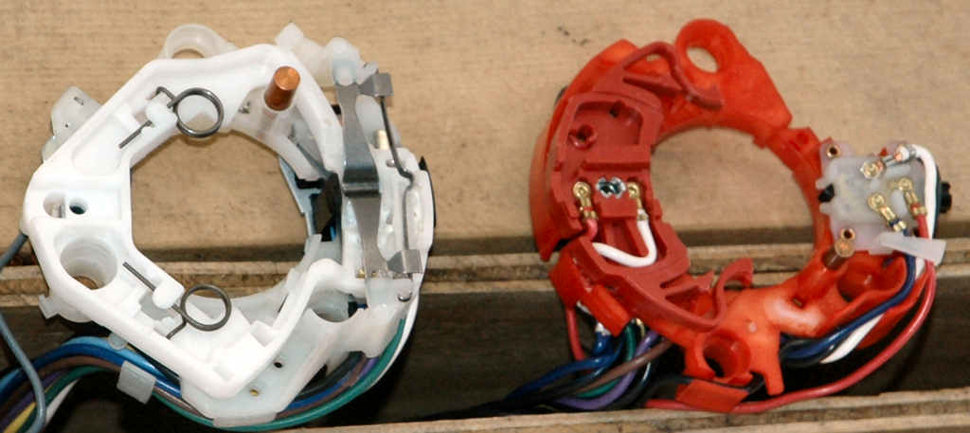
Photo 1: Delco switch is on the left. Note the plastic "fingers" at the top and bottom center of the Boyne switch.
Chevelle steering column
My early research was greatly facilitated by Dick Hull, a long-time Corvair enthusiast in my local club. He had a complete column from a '67 Chevelle with column-shift automatic transmission that he let me have, to disassemble and compare to the Corvair. So that's just what Duanne Luckow and I did.
The first thing I noticed is that the three holes for mounting the switch were somewhat different than for the Corvair. The top screw, at 12 o'clock, was the same. But the other two screws were in slightly different places. The next thing I noticed is that the hazard switch knob was indeed in a different location in the "z" axis. In other words, the knob was in the same place when thinking of the column as a clock face (3 o'clock) but the Delco switch's knob was lower on the column (closer to the floor). Both of these findings matched what Larry, Mark, and Mike told me.
Taking apart the Chevelle column also revealed several surprises, all of them good:
The upper bearing support was identical between the Corvair and Chevelle (both were stamped "5698362". This is possible because it has five holes in it, not three, to account for two out of the three holes being different between the switches. Note: On column-shift automatic transmission cars, the bearing support is snapped into a spring-loaded extension. See Photo 2.
The mounting screws were identical except for length. They were longer for the Chevelle to accommodate the extra height of the spring-loaded extension.
The stamped-steel housing that the switch and upper bearing support sit in was nearly identical to the Corvair housing. Both had all five holes for the mounting screws. The only significant difference was the shape and location of the hazard switch knob hole. See Photo 3. The Chevelle part is on the left (P/N 7800436) and the Corvair is on the right (P/N 7800465), both in group 2.906.
The wiring pigtail for the two switches was identical to the Corvair item—a single nine-pin semicircular connector with eight pins used. Wires in equivalent locations were the same color so we were confident they had the same function.

Photo 2: Upper bearing support from a column shift car with spring-loaded extension on left and floor shift car on the right.

Photo 3: Housing, showing the different location and shape of the hazard flasher knob hole for Delco switch on left and Boyne switch on right.
Corvair steering column
Intrigued by the existence of five holes in the Corvair housing and the upper bearing support, I checked the mount for these items, which on the Corvair (and Corvette) is a steel flange (P/N 7800569, Group 6.525) that is screwed to the top of the steering column mast jacket. Sure enough, that was the problem—it had only the three holes needed for the Boyne switch. See Photo 6.
Note: The upper flange is not used on column-shift automatic transmission cars. These cars use a flat steel plate (with all five holes!) with detents for the shifter. See Photo 4.
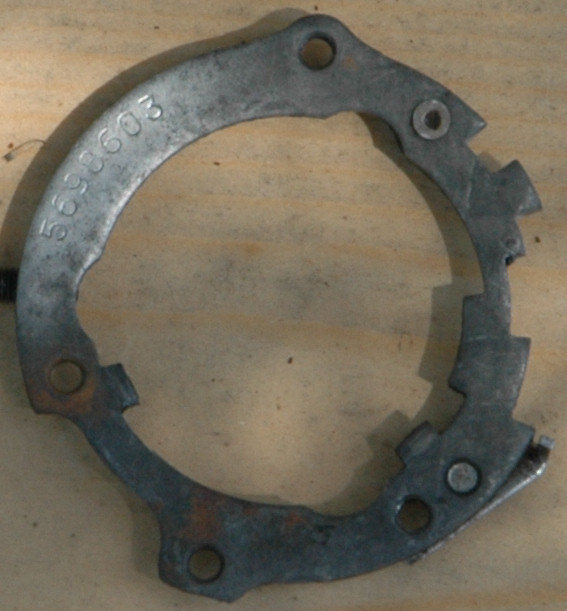
Photo 4: Plate to which turn signal switch attaches in a Chevelle with column-shift automatic transmission. Note shift detents on right side.
Pontiac steering column
In the summers of 2007 and 2008 I managed to track down several 1967-8 Pontiacs with the Boyne switch—a mixture of Catalinas, Firebirds, LeMans, and Tempests. All of the cars so equipped had column-shift automatic transmissions. Further, I was able to partially disassemble one of these columns, in a 1967 Catalina owned by Grant Morris, and compare the parts. I also managed to secure copies of the relevant sections of the Pontiac Master Parts Book for 1967 and 1968 from Ron Panzer. The parts in question apparently missed the printing deadline for the 1967 edition but are present in 1968.
One thing I thought odd was that the Corvair and Pontiac parts books show different part numbers for the Boyne switch housing. Comparing the two housings does reveal a slight difference. See Photo 9.
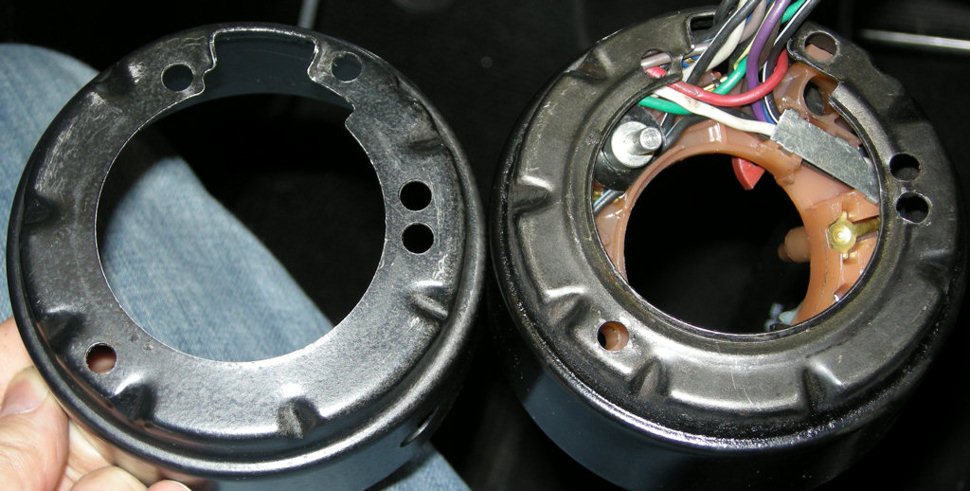
Photo 9: Corvair Boyne switch housing on the left and Pontiac Boyne switch housing on the right.
The difference is that the Pontiac housing has a rolled lip on the inside of the large hole. I believe this is because the Pontiac housing needs to center on the lower part of the steering column while the Corvair housing rests flat on the upper flange. Photo 6 shows this flange. Note: The Delco switch housings from the Chevelle and Buick column-shift automatic transmission cars also have this lip.
I also noticed that the shift detent plate on the Catalina has the stop screwed into a different hole than the Chevelle. See Photo 10.

Photo 10: Plate to which turn signal switch attaches in a Catalina with column-shift automatic transmission.
The screw for the stop occupies whichever hole in the lower right that is not needed to mount the turn signal switch. The stop itself is the same; it has two holes that line up with the two holes in the shift detent plate.
Other steering columns
Further checking in a cross-Chevy parts book for this era and the Pontiac Master Parts Book mentioned above confirms that the parts are common across all Chevys (except Corvair and Corvette) and all Pontiacs. In fact, a trip to the junkyard yielded a '67 Buick steering column and the key parts (housing, switch, bearing support) are identical. So, these parts were likely used across all of the GM lines.
As an interesting side project, I was able to deduce that there are five different switch housings. The table below lists their uses in the types of cars discussed in this article. I did not include floor shift cars or manual transmission cars but they all used one of the same five housings.
|
Boyne switch |
Delco switch |
|---|---|---|
With column-mounted shift indicator |
5699991 |
5698365 |
Without column-mounted shift indicator |
5698373 |
7800436 |
Corvair and Corvette |
7800465 |
N/A |
The reason for different switch housings for cars with the column-mounted shift indicator is the need to punch two slots in the top of the housing to hold the indicator.
Finally, I conducted a survey on Camaros.net of column-shift automatic transmission Camaros and none of them had the Boyne switch. So even though some Pontiac Firebirds used the Boyne switch, no Camaros appear to have.
Summary
So, to summarize, the changes needed to convert to the Delco switch are relatively minor. They are:
- Obtaining a Delco switch (obviously)
- Drilling and tapping two holes in the upper flange
- Deciding what to do about the housing (modify the Corvair item or obtain one from another GM car)
That's it! Let's go over these steps in detail.
Conversion details
Obtaining a Delco switch
The Delco switch is so much more durable than the Boyne switch that you might be able to salvage one from a 1967-8 GM car. Fortunately, though, exact reproduction switches are available from our vendors. You can use Photo 1 to figure out which one you need since the vendor catalogs don't seem to describe them by name. Incidentally, both the Boyne and Delco repro switches (as well as many others) are made by the same manufacturer, Shee-Mar of Longmont, CO. The Boyne switch is available from Corvair parts vendors. The Delco switch can be found from several sources by doing a web search for "Shee-Mar SM211".
A couple of things to note about the reproduction Delco switch:
Shee-Mar chose to produce only the version of the switch that includes the bulb socket. That's no problem for us because it is very easy to remove: just one Phillips screw and one wire to pop out of the connector, either using a tool like shown in Photo 5 or two jeweler's screwdrivers. Photo 5 also shows the wire and socket after removal. Conveniently, the wire used for the bulb socket is the unused ninth connector in the Corvair underdash harness so no wires need to be reconfigured.
The wiring pigtail on the Delco switch is a couple of inches longer than the one on the Boyne switch. I found this helpful. It allowed me to route the wire bundle up and over the steering column to the left, which keeps the wire out of the way better in the underdash area, and is how the factory intended it to be routed, according to the assembly manual (UPC 12, Page C1).
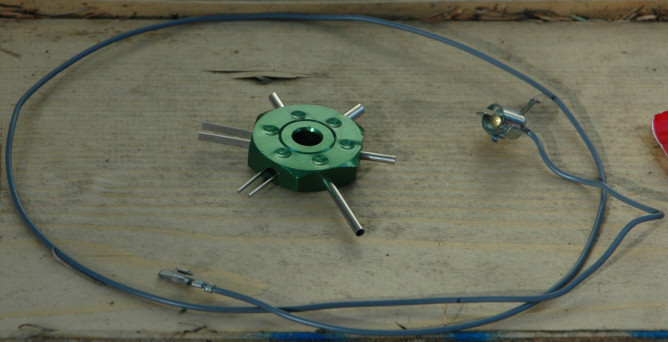
Photo 5: Bulb socket and wire after removal, along with a pin release tool.
Modifying the upper flange
Drilling and tapping the two new holes is not a big deal but there are three things to watch out for:
- The screws are #12-28. Yes, that's right: An obscure size and fine thread at that! If you don't already have a tap that size, it may take a little work to track one down. Hans Abplanalp emailed me in June, 2010 to say that a 5mm fine thread tap worked fine for him, being just a tiny bit smaller. As for the drill size, a #14 is just about ideal. If you don't have access to numbered drills, 11/64" is close. It's a bit undersized but workable. 3/16" is really too big and not recommended because the resulting threads created by the tap will be too shallow.
- Because the screws are fine thread, locating the holes exactly is important for them to thread in properly. Therefore, you'll likely have better results if you remove the flange so that you can mark the holes more precisely and use a drill press. Of course, if you make a mistake, you can always weld up the hole and try again! Hans also shared that he used the bearing hub as a template to drill the required holes in the flange.
- The flange is a press fit in addition to having three screws. I used a rubber mallet to gently tap the flange on and off.

Photo 6: Original upper flange on left and modified for Delco switch on right.
Deciding what to do about the housing
It is certainly possible to add a second hole to the Corvair housing in the location needed for the Delco switch's hazard flasher knob. However, that leaves the original hole. It's probably possible to find a round plug to fill that hole, but the hole is on a radius so that might make it more challenging. The hole is 1/2" x 1/2" square. Its location is directly across the housing from the turn signal switch lever slot (3 o'clock vs. 9 o'clock). The bottom edge of the hole begins on the lower side of the jog where the housing changes diameter.
In June, 2016, George Murnock shared a post on Corvair Center of his conversion, where he used JB Weld to fill in the hole. Looks great! His post also has many helpful photos of the dissaembly process. Be sure to check it out.
Note: The round rubber gasket used to seal the inside of the hazard flasher hole in the housing for the Boyne switch is not used in the Delco switch application.
Since the Delco switch was used on so many other GM cars in '67-8, I found it simpler to find a steering column in a junkyard car and liberate the housing. I also picked up some other spare parts while I was there, including another upper bearing support.
Notes on the shop manual
The factory shop manual does a decent job of describing the disassembly and reassembly steps in Section 9, and the exploded view diagram is also quite helpful. However, there are some omissions that can cause confusion:
- No mention is made of the round rubber gasket that seals the inside of the hazard flasher hole—but it's not needed in the Delco application. No mention is made, either, of the square rubber gasket that seals the turn signal lever hole. Don't forget to reinstall this to help keep dirt out! Note: This gasket is shown in the assembly manual (UPC 12, Page C1).
- Likewise, no mention is made of the circular plastic dust shield that sits on top of the switch, just underneath the cancelling cam. Note: I never understood why the dust shield had two holes in it, since an extra hole can let in dirt. One hole lines up perfectly with the cancelling cam contact on the top side of the Boyne switch. Well, now it's obvious that the other hole is for the contact on top of the Delco switch. See Photo 8. This shield is also shown in the assembly manual.
- No mention is made, either, of the round retaining ring that is about 1" lower on the steering shaft than the "C" clip which retains the thrust washer, wave washer, and upper bearing support. This is a minor issue, however, since the ring does not need to be removed in order to do this job.
Conclusion
I am very pleased with the conversion. The Delco switch has a much more positive action—a nice solid "snick" sound when activating and canceling the turn signal. Photo 7 shows the finished installation, before the dust shield was installed. Photo 8 is a close-up of the dust shield.
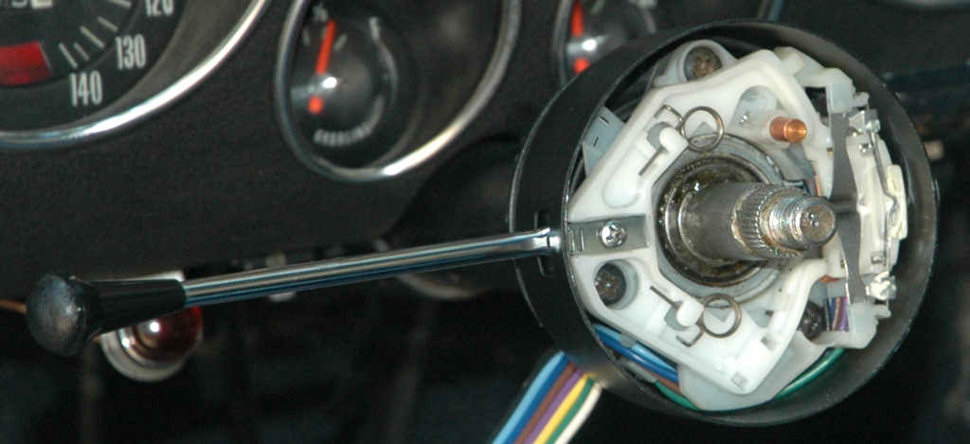
Photo 7: Completed installation of the Delco switch.
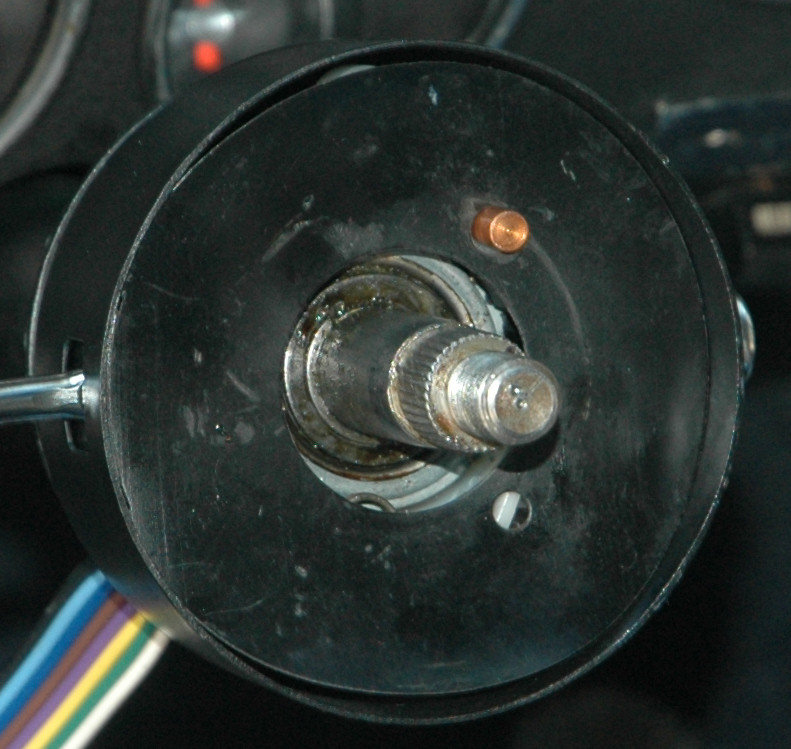
Photo 8: Close-up of dust shield, demonstrating the different locations of the horn contact between the two switches by the two holes in the shield.
The obvious superiority of the Delco switch, and the ease with which the conversion can be made, really had me curious as to why the Boyne switch was ever produced. I spoke with Dave Newell, historian for all things Corvair, and he had some theories as to why things happened the way they did, but there is no surviving documentation that he knows of to confirm these ideas. Nevertheless, the theories are quite interesting.
Theory #1: GM wanted to "throw a bone" to the Boyne company—perhaps to develop or maintain a business relationship—they contracted with them for a switch.
Theory #2: GM wished to develop a second source of the switches, as was traditional for them, in case of a shortage of Delco parts due to a strike or other plant closure (fire, bad weather, etc.).
Theory #3: GM wanted to try using a cheaper-to-produce switch, which the Boyne was known to be from its use by other domestic car manufacturers.
With any of these theories, it's pretty easy to assume that GM didn't want to displace the Delco part, just supplement it. So, the reasoning goes, they featured the Boyne switch on the two lowest-production lines—Corvair and Corvette; just enough to keep the Boyne switch in production. Folks at the Camaro Research Group are confident that Theory #2 is the correct one, based on their research.
Many thanks for all the help from: Hans Abplanalp, Danny Barber, John Barnes, Keith Biggers, Mark Corbin, Larry Claypool, Seth Emerson, Scott Farrell, John Hinckley, Dick Hull, Joe Lucia, Duanne Luckow, Roland Martin, Mike McKeel, Grant Morris, Dave Newell, and Kurt Sonen.